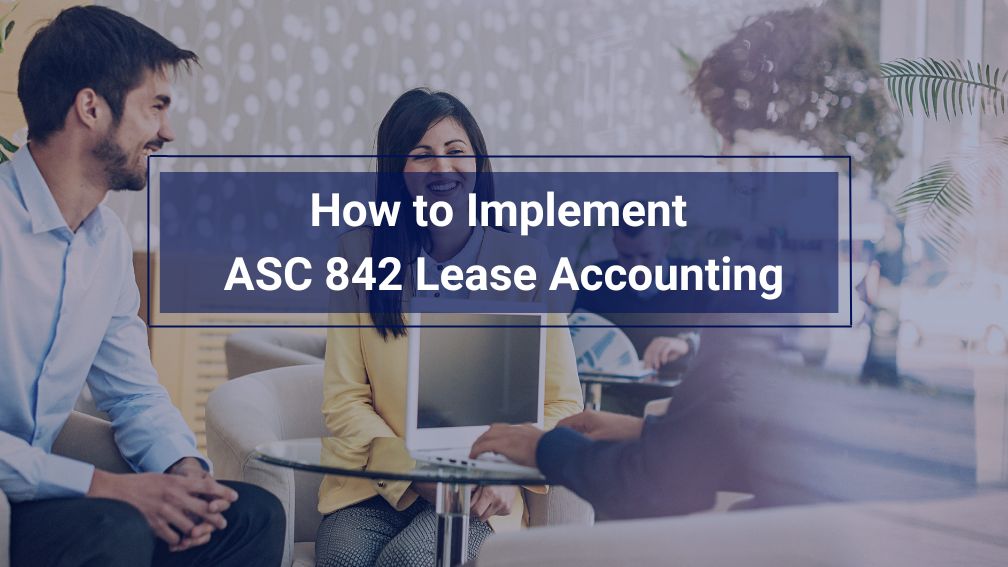How to Implement ASC 842 Lease Accounting Standard in Your Organization
Last Updated on September 8, 2023 by Morgan Beard
In the realm of financial reporting, change is the constant that keeps organizations agile and transparent. One such transformative change is the introduction of the Accounting Standards Codification (ASC) 842 — the lease accounting standard. Understanding how to Implement ASC 842 Lease Accounting Standard is the first step to gaining compliance for your organizations lease portfolio.
ASC 842 has set a new guidance for lease accounting, aiming to enhance financial transparency and accuracy across industries. If your organization is gearing up to align with this evolving landscape, this comprehensive guide is here to lead the way.
Understanding How to Implement ASC 842 Lease Accounting Standard: Unveiling the Landscape
Before delving into the implementation process, let’s understand the core tenets of ASC 842. This standard seeks to bring leases—those often concealed contractual obligations—into the light of financial reporting. In the past, leases were often buried in footnotes, allowing some financial obligations to remain obscured. ASC 842, however, demands that these leases be recognized and accurately presented on the balance sheet.
Navigating ASC 842 Implementation: A Step-by-Step Approach
Implementing the new FASB Standard, ASC 842 might seem like a complex undertaking, but breaking it down into manageable steps can significantly ease the process. An organization’s lease portfolio is often their second-largest expense, so clearly outlining reporting requirements and accounting implications is key to navigating how to implement ASC 842 lease accounting.
Step 1: Identification and Assessment of Leases
The first step is to identify all lease arrangements within your organization. This involves evaluating traditional leases, service contracts and embedded leases to determine if they meet the criteria of a lease as defined by ASC 842. It’s crucial to involve cross-functional teams, including finance, legal, and operations, and of course CPA firms and accounting teams to ensure comprehensive coverage.
Step 2: Data Gathering and Organization
Once leases are identified, gather relevant lease data. This includes lease terms, payments, confirm lease commencement dates and any other pertinent information. Creating a complete lease inventory in a centralized cloud lease accounting software simplifies the ongoing management process.
Step 3: Choosing a Transition Method
ASC 842 offers two transition methods: the modified retrospective approach and the retrospective approach. The former involves adjusting the opening balance of retained earnings, while the latter requires restating prior periods for comparative reporting. Understanding the implications of each method is vital in making an informed decision.
Step 4: Lease Classification
Leases are classified as either finance leases or operating leases based on specific criteria outlined in ASC 842. The classification impacts the recognition of lease liabilities and assets, as well as the pattern of expense recognition over the lease term. In the absence of an impairment, amortization of your lease liability via a straight-line lease expense is common.
Step 5: Recognition of Lease Liabilities and Assets
The calculation of lease liabilities involves estimating the present value of future lease payments. Simultaneously, right-of-use assets are recognized based on the corresponding liability amount and adjusted for any initial direct costs, incentives, and prepaid rent. The underlying assets economic life and fair market value is leverage to determine the lease recognition on your balance sheet.
Step 6: Ongoing Management and Disclosures
Post-implementation, maintaining accurate records and monitoring changes in lease terms is imperative. ASC 842 also mandates comprehensive disclosures in financial statements, including qualitative and quantitative information about leases.
Step 7: Leverage Technology Solutions
Technology plays a pivotal role in ASC 842 implementation. Lease accounting software can streamline data collection, lease classification, and financial reporting. Integrating these systems with existing financial software enhances accuracy and efficiency.
Lessons from Organizations: Real-World Insights
Learning from the experiences of organizations that have successfully implemented ASC 842 can provide invaluable insights. Their journeys highlight potential challenges and effective strategies. Public entities were the first to transition — A common thread among these organizations is the importance of early preparation, cross-functional collaboration, and a clear understanding of ASC 842’s intricacies.
Embrace the Transformation: Benefits Beyond Compliance
As you navigate the implementation journey, keep in mind that ASC 842 isn’t just about compliance; it’s an opportunity for transformation. Building your implementation plan and lease accounting playbook for renewal options, newly executed leases, leasehold improvements, and of course your monthly journal entries sets your teams up for ongoing compliance success. By accurately reflecting lease obligations, organizations can make more informed financial decisions. Enhanced transparency builds trust among stakeholders, fostering stronger investor relations and lending credibility to financial statements.
Conclusion: Your Path to ASC 842 Mastery
In the ever-evolving landscape of financial reporting, mastering ASC 842 is a strategic move toward transparency and accuracy. Learning how to implement ASC 842 Lease Accounting may appear intricate, breaking it down into structured steps simplifies the task. By identifying leases, organizing data, selecting a transition method, classifying leases, and leveraging technology, organizations can seamlessly transition to ASC 842 compliance.
Remember, ASC 842 isn’t merely a regulatory requirement—it’s an opportunity to elevate financial reporting practices, reinforce stakeholder trust, and enable better decision-making. As you embrace this transformation, keep your sights on the long-term benefits beyond compliance. A transparent financial narrative, enriched by accurate lease reporting, is a powerful tool that strengthens your organization’s financial foundation and fosters a brighter financial future.
